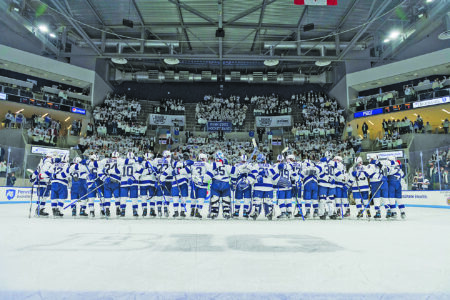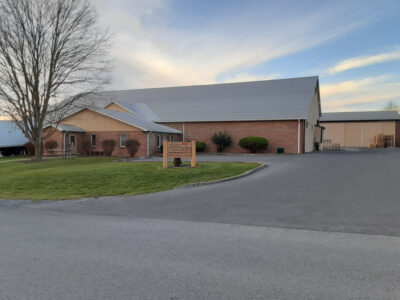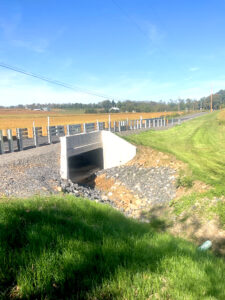Regenerative medicine helps dad avoid surgery
STORMSTOWN – Every kid thinks of their dad like a superhero of sorts. Rob Campbell isn’t faster than a speeding bullet, doesn’t pretend to be more powerful than a locomotive – although he can bench press 315 pounds – and can’t leap tall buildings in a single bound.
The 49-year-old Stormstown man works as a mechanical engineer at Penn State and stays physically fit by volunteering as a junior high wrestling and youth football coach, as well as weightlifting and participating in a local men’s ice hockey league.
Campbell also has a leg up on other dads – at least in the minds of his sons Kenton, 16; Gavin, 14; and Clark, 12 – after undergoing a regenerative medical procedure to avoid surgery on a partially torn ulnar collateral ligament and a partially torn medial flexor tendon in his right arm.
With his three boys, Campbell maintains an active lifestyle and is involved in various sports. “Whatever the kids are doing, that’s where I need to help out,” said Campbell, who grew up in Tyrone and is a former football and wrestling standout.
Last winter, while working out with his youngest son Clark, he injured his arm. After several months of pain and showing no improvement, Campbell sought help from Dr. Brian Jacobs, a sports medicine physician at Geisinger Healthplex State College.
“I was doing curls with barbells, and I felt something in my elbow,” Campbell recalled. “I just kept going through it. I didn’t know it would be a lasting thing. It never healed on its own.
“They were not completely torn, but very close to requiring surgery,” Campbell added.
At an ice hockey tournament, Cambell ran into Jacobs, who almost immediately diagnosed the UCL issue. Campbell called Jacobs’ office to set up an appointment just to make certain.
“I’ve had small tears before, but they’ve always healed,” Campbell said. “This was not getting better at all. I was miserable.
“I couldn’t shake peoples’ hands, I had trouble opening doors,” Campbell added. “I had to do everything with my left hand. Sleeping at night was not fun.”
Instead of surgery, Jacobs recommended a platelet-rich plasma injection to help heal the injury. Platelet-rich plasma is a form of regenerative medicine that uses the body’s own blood cells to help heal damaged tissue.
The procedure involves drawing the patient’s blood and spinning it in a centrifuge to separate the blood’s platelets from the other blood components. The PRP is then injected into the injured area to stimulate healing.
“PRP has been well-studied over the last 20-plus years,” Jacobs explained. “It is a way to use our body’s natural growth factors to help heal injuries and reduce inflammation. PRP is ideal for tendon injuries such as rotator cuff, elbow tendons, gluteal tendons, patella and Achilles tendons. Additionally, joints such as shoulders, hips and knees do very well with PRP.”
For Campbell, the results were nothing short of miraculous. He needed a half-dozen physical therapy visits in 2024 and was able to resume normal activity in two months’ time.
“By the middle of June my arm was feeling much better, and by July I was nearly pain-free and returned to regular activity,” he said. “It was truly amazing.”
In August 2024, only a few months after healing his right arm, Campbell injured his left elbow while playing ice hockey. After the pain persisted for two months, he again visited Dr. Jacobs.
“I examined and diagnosed a distal biceps injury but not a complete tear,” Jacobs said. “He elected once again to try a PRP injection for treatment.”
The results were the same. After a couple days in a sling to keep the injection from migrating from the injured area and a handful of physical therapy treatments, Campbell was back to performing normal activities in a few months.
With both injuries now fully healed, Campbell is back to his pre-injury routines with lifting and wrestling.
“My arms feel great, and no surgery was involved,” he said. “My youngest son is a very active baseball and football player. I play catch with him almost every day without any pain in my arms, thanks to the PRP treatment. Prior to the PRP with my right arm, I could not throw a ball and even shaking hands with someone was a challenge.”
For Campbell, the best part of the procedure was that surgery wasn’t needed. “They extracted some blood, put it in the centrifuge and injected it right back into the injury,” he said.
Geisinger’s orthopedics team in State College recently purchased a second PRP machine with even better capabilities of concentrating platelets, Jacobs said.
“Our sports medicine team continues to push the boundaries of its applications,” Jacobs added. “When we first brought PRP treatment here six years ago, we were averaging one to two a month. We are now doing more than 20 treatments a month.”
Campbell is very happy with the results of his treatment.
“I am so thankful for this treatment,” he says. “It seems so very natural to take something from your own body to help promote healing. I am grateful in both instances that this treatment was effective, and I was able to avoid surgery.
“With the PRP injections and a little physical therapy, I am back to doing the things I love,” Campbell added.
He wanted to share his story because he believes other individuals could benefit. “For athletes or even construction (workers), could see there are alternatives to surgery,” Campbell said.
Jacobs said there are limits to the injury that stunt the treatment’s effectiveness, including the tear can’t be more than 70 percent. Campbell feels fortunate that his injuries were just under that mark.
It made his recovery much easier and timely, especially with his active sons. “One of them is outside – my youngest – waiting for me to finish this interview to throw the (base)ball,” Campbell joked.
After all, he is their superhero.



